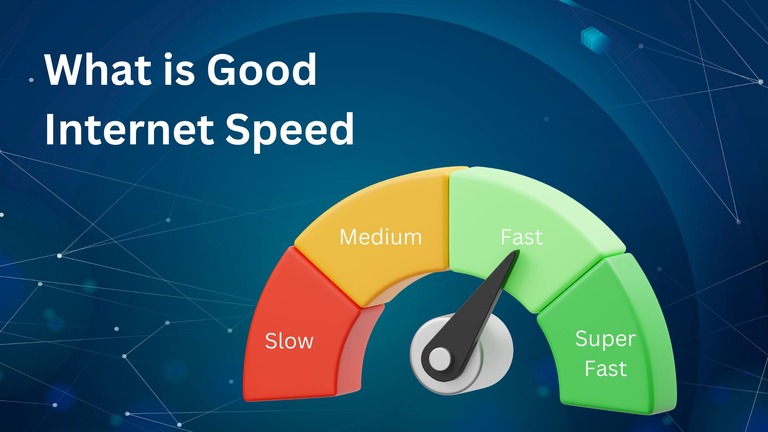Internet speed can be confusing, especially with all the different units and terminology thrown around. If you've ever wondered why your "100 Mbps" connection doesn't download files at 100 megabytes per second, you're not alone. Let's break down everything you need to know about internet speed.
The Crucial Difference: Mbps vs MBps
The most important distinction to understand is between Mbps and MBps:
Mbps (Megabits per second)
-
What it is: The standard unit ISPs use to advertise internet speeds
-
Used for: Measuring bandwidth and connection speed
-
Example: "100 Mbps internet plan"
MBps (Megabytes per second)
-
What it is: The unit you see when downloading files
-
Used for: Actual data transfer rates
-
Example: "Downloading at 12 MBps"
The Math Behind It
1 Byte = 8 bits
So to convert:
-
Mbps to MBps: Divide by 8
-
MBps to Mbps: Multiply by 8
Example: A 100 Mbps connection theoretically maxes out at 12.5 MBps (100 ÷ 8 = 12.5)
Other Important Speed Terms
Download Speed
-
What it measures: How fast you can receive data from the internet
-
Used for: Streaming, browsing, downloading files
-
Typically: The larger number in speed tests
Upload Speed
-
What it measures: How fast you can send data to the internet
-
Used for: Video calls, file uploads, cloud backups
-
Typically: Smaller than download speed for residential plans
Latency (Ping)
-
What it measures: Time for data to travel to a server and back
-
Measured in: Milliseconds (ms)
-
Impact: Affects responsiveness, crucial for gaming and video calls
Jitter
-
What it measures: Variation in latency over time
-
Impact: Affects quality of real-time applications like VoIP
What Speeds Do You Actually Need?
Basic Internet Activities
| Activity |
Recommended Speed |
| Email and basic browsing |
1-5 Mbps |
| Social media |
3-5 Mbps |
| Music streaming |
2-10 Mbps |
| Standard video calls |
1-4 Mbps |
Streaming Video
| Quality |
Recommended Speed |
| Standard Definition (480p) |
3-4 Mbps |
| High Definition (720p) |
5-10 Mbps |
| Full HD (1080p) |
15-25 Mbps |
| 4K Ultra HD |
25+ Mbps |
Gaming and Advanced Activities
| Activity |
Recommended Speed |
| Online gaming |
3-10 Mbps |
| Game downloads |
25+ Mbps |
| Large file uploads |
10+ Mbps |
| Multiple 4K streams |
50+ Mbps per stream |
Factors That Affect Real-World Speeds
Network Congestion
-
Peak hours: Evenings and weekends often see slower speeds
-
Shared bandwidth: Cable internet is shared among neighbors
-
Server capacity: Popular websites may have traffic limitations
Your Home Network
-
WiFi vs Ethernet: Wired connections are typically faster
-
Router age: Older routers may not support full speeds
-
Device capabilities: Old devices may limit connection speeds
Distance and Infrastructure
-
Distance from ISP: Farther locations may get slower speeds
-
Connection type: Fiber > Cable > DSL > Satellite
-
Network routing: Data takes different paths affecting speed
Why Your Speed Test Doesn't Match Your Plan
Several factors explain the difference between advertised and actual speeds:
"Up To" Speeds
- ISPs advertise maximum theoretical speeds
- Real-world speeds are often 50-80% of advertised speeds
- Network conditions affect actual performance
Protocol Overhead
- Internet protocols require extra data for routing and error correction
- This reduces the amount of bandwidth available for your content
- Typically accounts for 10-15% speed reduction
Testing Variables
-
Server location: Closer servers usually provide faster results
-
Time of day: Off-peak hours often show higher speeds
-
Device used: Different devices may show different results
How to Get the Most From Your Connection
Optimize Your Setup
-
Use ethernet when possible for maximum speed
-
Position router centrally for better WiFi coverage
-
Update router firmware regularly
-
Choose less congested WiFi channels
Monitor Your Usage
-
Run regular speed tests to track performance
-
Test at different times to understand patterns
-
Check multiple server locations for consistency
-
Document results to discuss with your ISP if needed
Choosing the Right Internet Plan
Single Person Household
-
Light usage: 25-50 Mbps
-
Moderate usage: 50-100 Mbps
-
Heavy usage: 100+ Mbps
Family of 3-4
-
Basic needs: 100-200 Mbps
-
Multiple streamers: 200-400 Mbps
-
Gamers and streamers: 400+ Mbps
Work From Home
-
Video calls: 25+ Mbps
-
Large file transfers: 100+ Mbps
-
Multiple workers: Add 25 Mbps per person
Future-Proofing Your Internet
Consider Future Needs
-
Smart home devices: Each device adds to bandwidth needs
-
Higher quality content: 8K streaming will require more speed
-
Remote work trends: Video calls and cloud services demand more bandwidth
Technology Trends
-
WiFi 6: New standard supports much faster speeds
-
Fiber expansion: More areas getting gigabit fiber access
-
5G home internet: Alternative to traditional broadband
Conclusion
Understanding internet speed terminology helps you make informed decisions about your internet service. Remember that Mbps is the advertised speed, MBps is your actual download rate, and your real-world experience depends on many factors beyond just the numbers.
The key is choosing a plan that meets your current needs with some room for growth, then optimizing your home network to get the most from your connection.
Ready to test your current internet speed? Run a speed test now and see how your connection measures up!
